Back to the Trip index and Ryenats home pages
Botanical Trip 30th July 2005
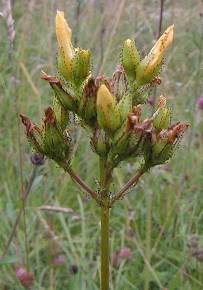 This trip was to see two local rarities, the Pale or Mountain St. John’s Wort Hypericum montanum and Intermediate Wintergreen Pyrola media, together with the slightly less scarce Common Wintergreen Pyrola minor. As a bonus on the way home we saw Gipsywort Lycopus europaeus growing around the margins of a man-made lake. These notes are very brief as I wanted to show the pictures.
This trip was to see two local rarities, the Pale or Mountain St. John’s Wort Hypericum montanum and Intermediate Wintergreen Pyrola media, together with the slightly less scarce Common Wintergreen Pyrola minor. As a bonus on the way home we saw Gipsywort Lycopus europaeus growing around the margins of a man-made lake. These notes are very brief as I wanted to show the pictures.
Silpho Quarry
Our first site was a long-disused limestone quarry near Silpho. The track down to it was itself interesting, with many colourful wildflowers in the verges, including meadow cranesbill Geranium pratense, knapweed Centaurea nigra, field scabious Knautia arvensis and greater bellflower Campanula latifolia. The quarry floor was like a garden with a fantastic display of late summer flowers, including the delicate lesser scabious Scabiosa columbaria in huge numbers. The photo below shows the blue scabious with yellow lady’s bedstraw Galium verum and purple knapweed prominent.
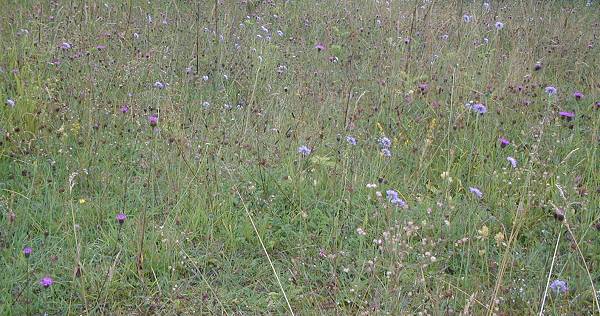
 When we saw the hypericum it was a classic case of “jizz”: it just didn’t look like any of the other hypericums, although defining why not is very difficult... the clinching factor in the identification is the numerous black dots running along edge of the leaves on the underside (see right). Although this plant is very distinctive, and there were a dozen or so specimens up to a foot or so tall, I have to say you could be in that quarry for a very long time before you found one! Many thanks to Chris for showing them to us.
When we saw the hypericum it was a classic case of “jizz”: it just didn’t look like any of the other hypericums, although defining why not is very difficult... the clinching factor in the identification is the numerous black dots running along edge of the leaves on the underside (see right). Although this plant is very distinctive, and there were a dozen or so specimens up to a foot or so tall, I have to say you could be in that quarry for a very long time before you found one! Many thanks to Chris for showing them to us.
Turkey Carpet Woodland
Our next stop was nearby, close to a small triangle of land with the extraordinary name of Turkey Carpet. Again Chris led us straight to the spot, this time to where about ten plants of Intermediate Wintergreen grow, only two of which had flower spikes. As this might be the only cluster of this species in NE Yorkshire it was a privilege to see them. Even better, a colony of Common Wintergreen grows within about half a mile, so we could compare these two Pyrola species. Even though the petals had fallen we could clearly see the difference in the length of the styles, an the fact that P. media was altogether taller (about 6-8"), with the flower spike longer and with the individual flowers spaced a little more widely. The light was not very good, especially for P. minor, which is my excuse for the rather poor photo.
Postscript: Gipsywort on the Lake-side
A brief stop at a man-made lake allowed us to see gipsywort, as well as other waterside vegetation and both yellow and white waterlilies. Gipsywort is a member of the mint family, though it has no scent. It is not uncommon in the south where it can be seen along river and canal banks, but it is rare this far north. The flowers are very tiny and appear white, but under a lens they can be seen to have numerous purple spots which are very attractive (but beyond my photographic ability).
Pictures
[Some pictures link to larger, more detailed versions]
All photos are copyright (© Gill Smith unless otherwise credited). If you would like to use them for any purpose please email Gill. Our normal policy is to allow free but acknowledged use of pictures for non-commercial purposes. Some of the photos are available at higher resolutions.
Photographs taken at Silpho Quarry
Pale St. John’s Wort Hypericum montanum. The first picture shows the stiff, upright habit, with almost no branching and the flower heads clumped at the top of the stem.
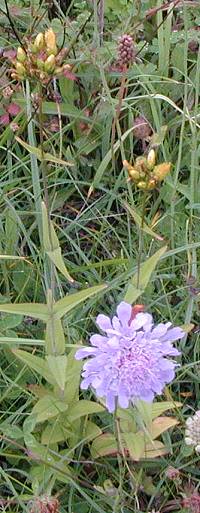

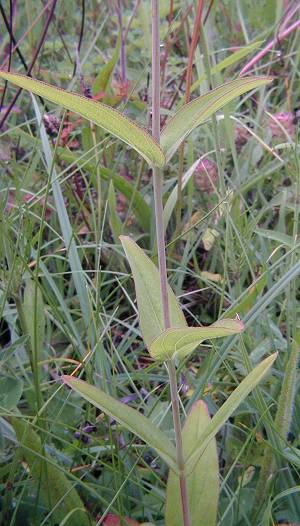
Small scabious Scabiosa columbaria is a much more delicate plant than field scabious, with finely divided pinnate leaves. The flowerheads only have one row of sepal-bracts underneath, and there are long purple bristles (clearly visible in the right hand picture).
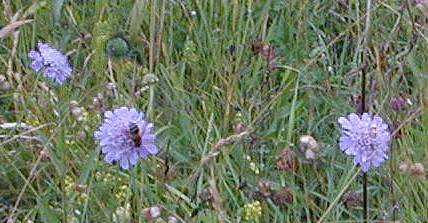
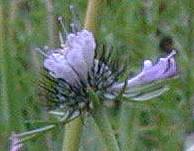
Lady’s Bedstraw Galium verum is probably the most attractive of the bedstraws, often covering quite large patches of dry banksides with a golden carpet. The name derives from the fact that when cut and dried the plant has a pleasant smell and was apparently used to sweeten bedding.This is a close=up, the individual flowers are only a couple of mm across.
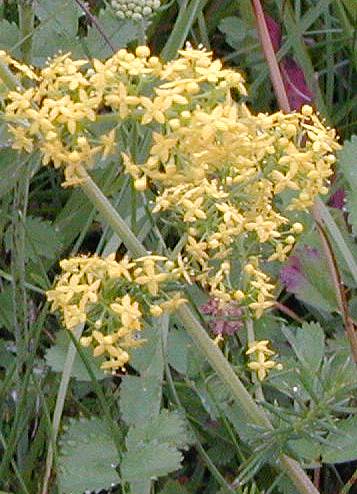
Hedge Parsley Torilis japonica is the latest flowering of the common white umbellifers, and far more dainty than either cow parsley or rough chervil, never mind hogweed.
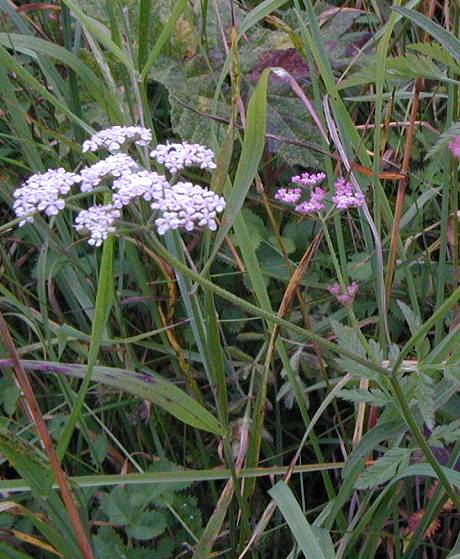
Harebell Campanula rotundifolia is the commonest wild bellflower, although sadly decreasing as its preferred habitat of dry grassland and banksides disappears.
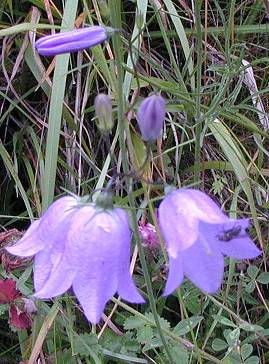
Eyebright Euphrasia officinalis agg. is a charming little plant which is semi-parasitic on grasses, hence its relatively small leaves. There are numerous varieties and subspecies, some of which are pinky-purple, but this white variety with the yellow spot and fine dark veins is the common one in Ryedale.
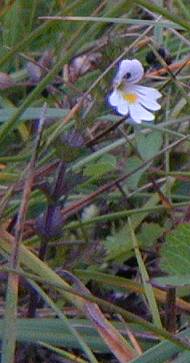
Turkey Carpet
Intermediate Wintergreen Pyrola media is uncommon everywhere, and usually grows in pinewoods in Scotland. It is very scarce in Yorkshire, and this is the only time I have been lucky enough to see it. The long styles are characteristic of this species. Sadly the petals had fallen (they are small and pinkish-white, curved into a bell-like form just covering the green ovaries seen here but allowing the style to protrude).
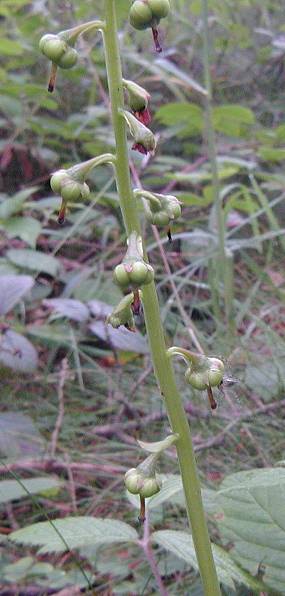
Common Wintergreen Pyrola minor is actually not very common, but less rare than P. media. It grows in similar habitats and is a very similar plant. The main difference is that its styles are much shorter, and barely protrude at all when the petals are present.
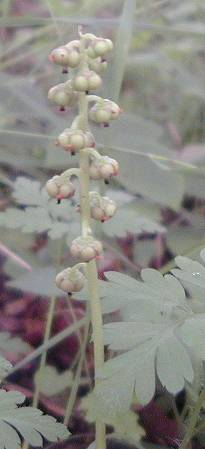
Bilberry Vaccinium myrtillus, seen here in fruit, is a very common undershrub in pine woods as well as growing on open moorland; it indicates an acid soil. I’m afraid I ate this one after photographing it.
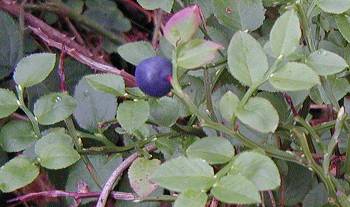
Gipsywort
This picture shows the jagged leaves and whorls of white flowers on this mint relative, which is about 2' tall and grows at the edge of fresh water.
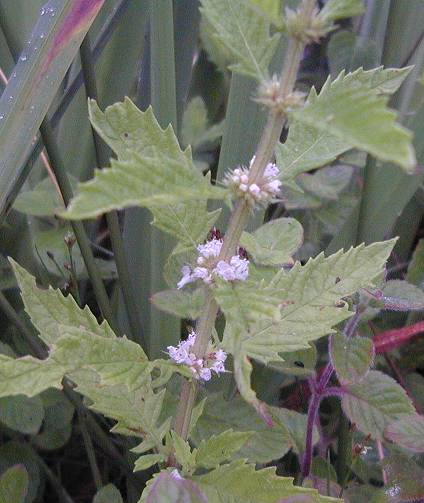
© Gill Smith July 2005
Back to the Top, Trip index and Ryenats home pages
 This trip was to see two local rarities, the Pale or Mountain St. John’s Wort Hypericum montanum and Intermediate Wintergreen Pyrola media, together with the slightly less scarce Common Wintergreen Pyrola minor. As a bonus on the way home we saw Gipsywort Lycopus europaeus growing around the margins of a man-made lake. These notes are very brief as I wanted to show the pictures.
This trip was to see two local rarities, the Pale or Mountain St. John’s Wort Hypericum montanum and Intermediate Wintergreen Pyrola media, together with the slightly less scarce Common Wintergreen Pyrola minor. As a bonus on the way home we saw Gipsywort Lycopus europaeus growing around the margins of a man-made lake. These notes are very brief as I wanted to show the pictures.
 When we saw the hypericum it was a classic case of “jizz”: it just didn’t look like any of the other hypericums, although defining why not is very difficult... the clinching factor in the identification is the numerous black dots running along edge of the leaves on the underside (see right). Although this plant is very distinctive, and there were a dozen or so specimens up to a foot or so tall, I have to say you could be in that quarry for a very long time before you found one! Many thanks to Chris for showing them to us.
When we saw the hypericum it was a classic case of “jizz”: it just didn’t look like any of the other hypericums, although defining why not is very difficult... the clinching factor in the identification is the numerous black dots running along edge of the leaves on the underside (see right). Although this plant is very distinctive, and there were a dozen or so specimens up to a foot or so tall, I have to say you could be in that quarry for a very long time before you found one! Many thanks to Chris for showing them to us.











